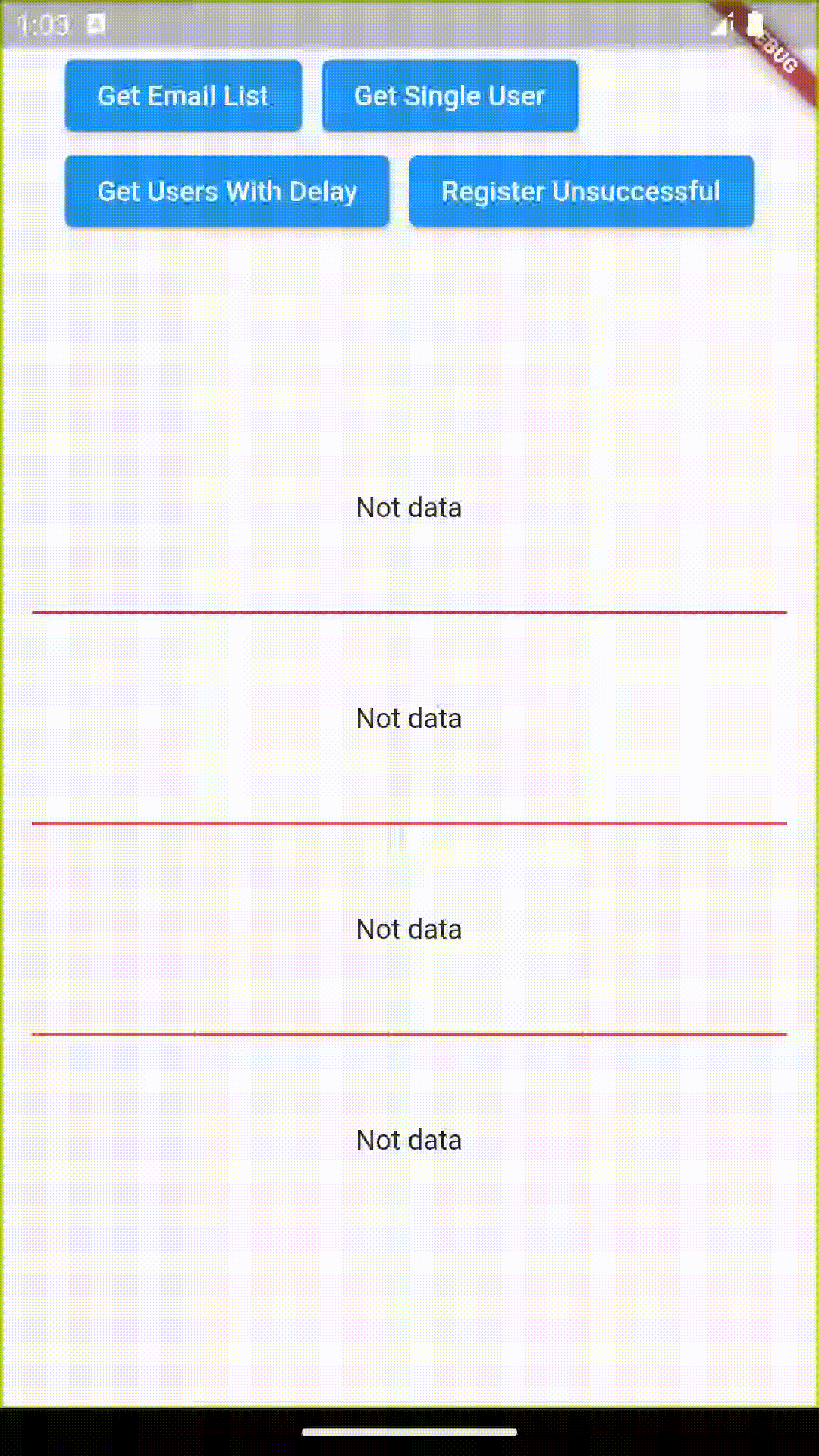This library is a network management layer built on top of Dio.
- It automatically parses JSON data from the API and returns it to you as a model class.
- It converts generated exceptions into its own exception types and then returns these exceptions to you.
- It automatically sends a refresh token request using the refresh token.
You can use the command to add dio as a dependency with the latest stable version:
$ dart pub add dio_nexus
Or you can manually add dio into the dependencies section in your pubspec.yaml:
dio_nexus: '^replace-with-latest-version'
We start by initialize the library. Here you can give these features to your project by giving parameters such as baseUrl, baseOptions and networkConnection.
import 'package:dio_nexus/dio_nexus.dart';
IDioNexusManager networkManager = DioNexusManager(
printLogsDebugMode: false,
options: BaseOptions(
baseUrl: "https://reqres.in/",
headers: {'Content-type': 'application/json'},
receiveTimeout: const Duration(seconds: 15),
connectTimeout: const Duration(seconds: 15)));
The sendRequest function in the library allows you to send requests to APIs. It takes generic types R and T.
The R type specifies the return type of the request. Based on the responseModel provided within the library, the received data from the server is automatically parsed. You will receive the desired model within the IResponseModel. If an error occurs, the IResponseModel will not return a null IErrorModel, but instead provide the statusCode, errorMessage, and NetworkExceptions.
The T type indicates the model you want to parse. Your model class, representing the JSON data, should inherit from the IDioNexusNetworkModel. This allows the library to perform the parsing process.
Future<IResponseModel<R?>?> sendRequest<T extends IDioNexusNetworkModel<T>, R>();
Use refresh Token for expired token. In case of Authentication fail, the refresh token you have given will work.
IDioNexusManager networkManager = DioNexusManager(
onRefreshFail: () {
// Action to be taken when refresh Token fails.
},
onRefreshToken: (error, options) {
// Write your refresh token code.
},
options: BaseOptions(
baseUrl: "https://reqres.in/",
headers: {NetworkHeadersEnum.ContentType.value: "application/json"},
receiveTimeout: const Duration(seconds: 15),
connectTimeout: const Duration(seconds: 15)));
Call the translate function anytime you want to translate the app and provide it with the language code It supports Turkish and English. Locale("tr) and Locale("en")
IDioNexusManager networkManager = DioNexusManager(
options: BaseOptions(
baseUrl: "https://reqres.in/",
headers: {NetworkHeadersEnum.ContentType.value: "application/json"},
receiveTimeout: const Duration(seconds: 15),
connectTimeout: const Duration(seconds: 15)),
locale: const Locale('tr'),
networkConnection: NetworkConnection(
context: context,
snackbarDuration: const Duration(seconds: 5)));
In situations where there is no internet connection, it displays a toast message to notify the user about the lack of internet. By clicking the Retry button, the user can send another request to the previous request.
snackbarDuration to set the visibility of the snackbar that appears.
IDioNexusManager networkManager = DioNexusManager(
options: BaseOptions(
baseUrl: "https://reqres.in/",
headers: {NetworkHeadersEnum.ContentType.value: "application/json"},
receiveTimeout: const Duration(seconds: 15),
connectTimeout: const Duration(seconds: 15)),
networkConnection: NetworkConnection(
context: context,
snackbarDuration: const Duration(seconds: 5)));
🎉 Result:
When there is no response from the server or the server cannot be reached, a toast message is displayed by default, indicating a timeout. To use it, you only need to provide the constructor.
To utilize the functionality, simply instantiate the class by providing the necessary constructor:
IDioNexusManager networkManager = DioNexusManager(
options: BaseOptions(
baseUrl: "https://reqres.in/",
headers: {NetworkHeadersEnum.ContentType.value: "application/json"},
receiveTimeout: const Duration(seconds: 15),
connectTimeout: const Duration(seconds: 15)),
timeoutToast: TimeoutToast(showException: true));
🎉 Result:
You can add your own custom interceptor.
IDioNexusManager networkManager = DioNexusManager(
interceptor: MyInterceptor(),
options: BaseOptions(
baseUrl: "https://reqres.in/",
headers: {NetworkHeadersEnum.ContentType.value: "application/json"},
receiveTimeout: const Duration(seconds: 15),
connectTimeout: const Duration(seconds: 15)));
Return Users type:
Future<IResponseModel<Users?>?> getUsers() async {
IResponseModel<Users?>? response = await nexusManager.sendRequest<Users, Users>(
"api/users",
requestType: RequestType.GET,
responseModel: Users());
return response;
}
Return Model type:
Future<IResponseModel<List<Model>?>?> request() async {
return await nexusManager.sendRequest<Model, List<Model>>(
'api/path',
responseModel: Model(),
requestType: RequestType.GET,
queryParameters: {"key": value});
}
When the server does not return JSON data as a response, this is handled by the NexusModel. Based on the data received from the server, you provide a T type. This T type can be String, int, bool, double, or dynamic. The response will be parsed and presented to you based on the T type you specify.
Future<IResponseModel<NexusModel<String>?>?> request() async {
return await nexusManager.sendRequest<NexusModel, NexusModel<String>>(
'api/path',
responseModel: NexusModel<String>(),
requestType: RequestType.GET,
queryParameters: {"key": value});
}
When initializing DioNexusManager, you can provide the following properties:
/// [onRefrestToken] when HttpStatus return unauthorized, you can call your refrestToken manager
Future Function(DioException error, BaseOptions options)? onRefreshToken;
/// If [onRefrestToken] return fail, this metot will work.
///
/// Example: When refreshToken==fail, app will logout.
Function? onRefreshFail;
/// Set true to print requests or errors received.
final bool? printLogsDebugMode;
/// When no internet connection, request again to server
NetworkConnection? networkConnection;
/// Show toast when request or connection timeout.
/// Default value is false.
TimeoutToast? timeoutToast;
/// This variable is used for no internet connection.
/// You can modify this counter when initializing [DioNexusManager].
/// When your internet connection is lost, you can try re-requesting up to 5 times.
int maxNetworkTryCount;
/// Get all interceptors
Interceptors get showInterceptors;
Safa Uludoğan




